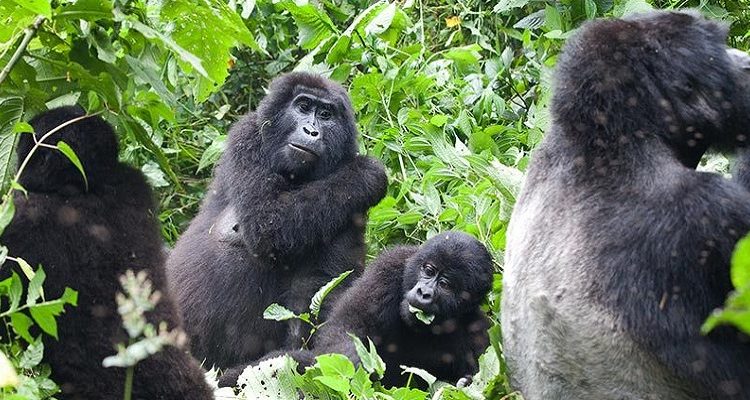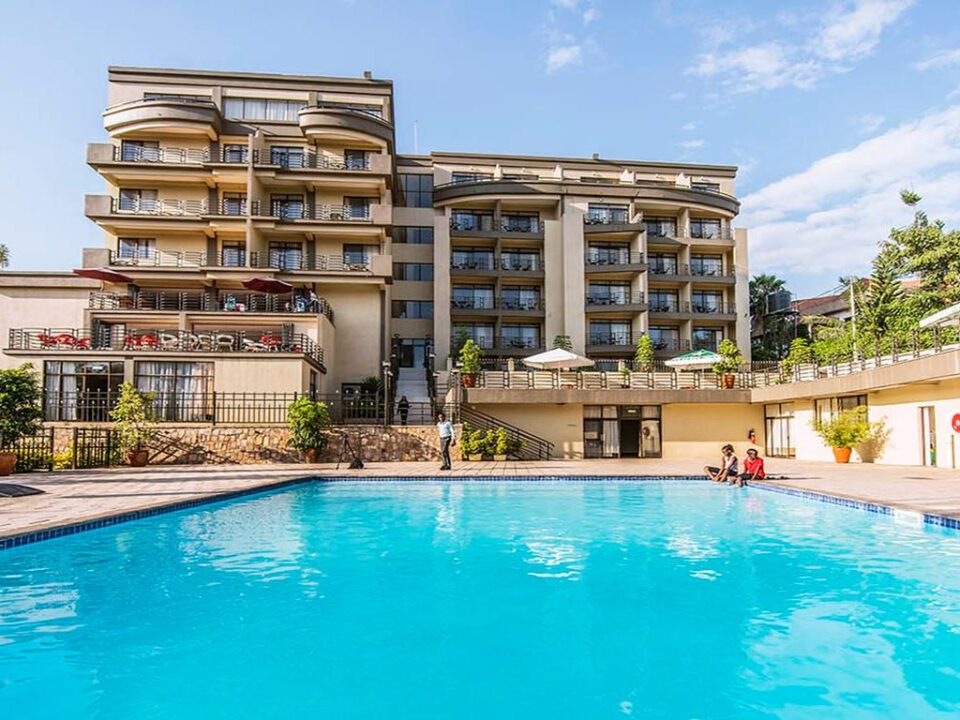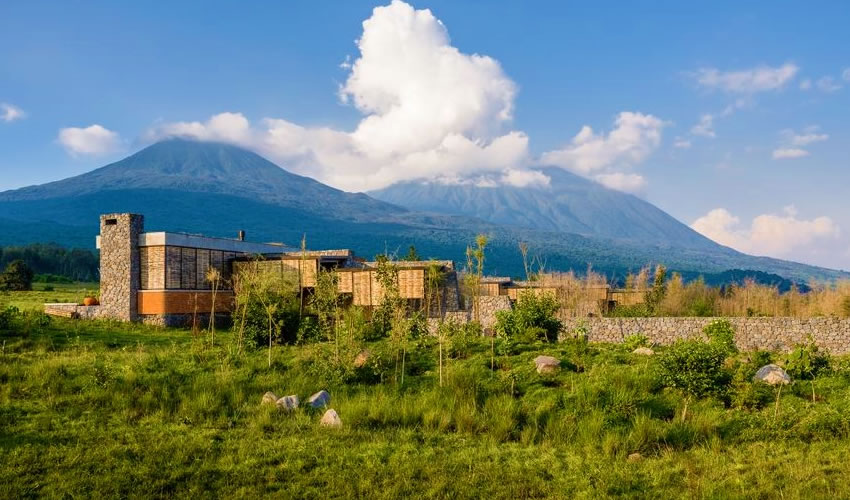- GET IN TOUCH WITH US:
- +256 753518160
- +256 777842166
- info@experiyatourcompany.com

When is the best time for gorilla trekking in Rwanda?
November 13, 2025
Can I trek golden monkeys in Volcanoes National Park?
November 13, 2025What’s the difference between Rwanda and Uganda for gorilla trekking?

What’s the Difference Between Rwanda and Uganda for Gorilla Trekking?
Understanding the Two Premier Gorilla Trekking Destinations in Africa
Gorilla trekking in East Africa stands as one of the world’s most extraordinary wildlife encounters, and for most travelers, the choice often comes down to two countries: Rwanda and Uganda. These neighboring nations host the largest remaining populations of endangered mountain gorillas, offering unforgettable experiences in their lush volcanic forests. But while both destinations promise magical and deeply emotional journeys, they differ in several important ways. Understanding these differences helps travelers choose the country that best aligns with their expectations, budget, fitness level, and travel style.
This detailed guide explores everything from terrain, trekking difficulty, habituated gorilla families, permit pricing, accessibility, accommodation options, conservation practices, cultural experiences, and overall atmosphere. By the end, you will have a comprehensive understanding of what sets Rwanda and Uganda apart for gorilla trekking and why each destination remains exceptional in its own way.
The Mountain Gorilla Landscape: Rwanda vs. Uganda
While both Rwanda and Uganda share the Virunga Massif, their gorilla trekking environments differ in terrain, vegetation, altitude, and overall trekking experience.
Rwanda is home to Volcanoes National Park, part of the larger Virunga Conservation Area. Its terrain is dominated by volcanic mountains, thick vegetation, bamboo forests, and high elevation slopes. The scenery is dramatic, open, and cinematic, offering breathtaking views during the trek. Because most treks take place on steeper volcanic slopes, Rwanda’s trekking environment often feels more rugged and adventurous.
Uganda hosts gorilla trekking in Bwindi Impenetrable National Park and the smaller Mgahinga Gorilla National Park. Bwindi’s terrain is dense, wild, and deeply forested, characterized by thick undergrowth, rolling hills, and elevation changes. The name “Impenetrable” accurately describes its challenging vegetation and sometimes steep valleys. It provides a raw, immersive jungle atmosphere. Mgahinga, located on the slopes of the Virunga Mountains, resembles Rwanda’s scenery more closely but is less commonly chosen because Bwindi hosts more gorilla families.
Both terrains are beautiful in their own way, but Rwanda tends to feel more open and volcanic, while Uganda feels more ancient, thick, and densely forested.
Trekking Difficulty: Which Is Easier?
The difficulty of gorilla trekking varies depending on the gorilla family assigned, weather conditions, and individual fitness.
Rwanda generally offers shorter and more predictable treks. Gorilla families in Volcanoes National Park often stay within accessible distances, and the terrain, although steep, typically involves easier navigation through bamboo forests. Rangers assign gorilla groups based on physical fitness, making the trek manageable for most visitors.
Uganda is known for more challenging treks, especially in Bwindi. The forest’s thick vegetation and mountainous terrain often require hikers to navigate slippery trails, dense undergrowth, and long distances that can range from one hour to several hours depending on gorilla movement. While some treks can be short, others are physically demanding and test endurance.
In general, travelers seeking a less strenuous trek may find Rwanda slightly more suitable, while adventure enthusiasts who don’t mind a tougher hike may enjoy Uganda’s wilderness feel.
Gorilla Families and Trekking Experience
Both countries offer trekking to habituated gorilla families, but the structure and distribution vary.
Rwanda currently has twelve habituated gorilla families available for tourism in Volcanoes National Park. The families are well monitored, easily located, and offer consistent sightings.
Uganda, on the other hand, has more habituated gorilla families, especially in Bwindi Impenetrable Forest, where over twenty-two families are available to visit. This larger number increases the likelihood of securing permits during peak seasons and spreads tourists across multiple sectors, reducing congestion.
While Rwanda offers a more concentrated trekking experience, Uganda offers more variety and greater flexibility in securing trekking slots.
Permit Prices: The Most Significant Difference
One of the most striking differences between Rwanda and Uganda is the cost of the gorilla trekking permit.
In Rwanda, a gorilla trekking permit costs 1500 USD per person for foreign non-residents. Rwanda positions gorilla trekking as a luxury experience aimed at premium travelers, conservationists, and high-end tourists.
In Uganda, the permit price is 700 USD per person, offering nearly half the cost of Rwanda’s permit. This makes Uganda more accessible to a wider range of travelers, including budget-conscious visitors, backpackers, and families.
For this reason, Uganda remains the top choice for travelers seeking a more affordable yet equally authentic gorilla trekking experience.
Accessibility and Travel Logistics
Both Rwanda and Uganda offer safe and convenient travel routes, but access to the trekking parks differs significantly.
Rwanda offers exceptional accessibility. Volcanoes National Park is located just a 2.5-hour drive from Kigali International Airport. This makes Rwanda ideal for short trips, weekend visits, or travelers combining gorilla trekking with other countries. Many visitors can trek gorillas the morning after arriving in Rwanda, making it ideal for time-sensitive itineraries.
Uganda, however, requires more travel time. Bwindi Impenetrable National Park is approximately 8–10 hours by road from Entebbe or Kampala. While domestic flights from Entebbe to Kihihi or Kisoro can reduce travel time substantially, they add extra costs. This longer travel time makes Uganda ideal for multi-day adventures and full safari circuits.
For convenience and short travel windows, Rwanda is more efficient. For extended safaris and deeper experiences, Uganda has advantages.
Scenic Beauty and Overall Atmosphere
Both destinations are stunning, but each offers a distinct visual and emotional atmosphere.
Rwanda’s scenery is defined by dramatic volcanoes, bamboo slopes, and cloud-draped peaks. The atmosphere feels mystical, clean, well organized, and exceptionally serene. Rwanda’s tourism infrastructure is polished, professional, and geared toward luxury travelers.
Uganda’s atmosphere is more wild, raw, and richly biodiverse. Bwindi’s thick ancient forest creates a deeply immersive jungle feeling, and surrounding communities offer lively cultural interactions, traditional dance experiences, and authentic local engagement. Uganda’s landscape feels more dramatic and adventurous, with winding hills, terraced farms, and misty valleys.
Accommodation Options: Luxury vs. Diversity
Both Uganda and Rwanda offer incredible accommodation options near trekking areas.
Rwanda focuses heavily on luxury travel, offering high-end lodges such as One&Only Gorilla’s Nest, Bisate Lodge, and Sabyinyo Silverback Lodge. These lodges provide unmatched comfort, fine dining, and breathtaking views but come at a premium price.
Uganda offers a wider variety of options, ranging from luxury eco-lodges to mid-range lodges and budget-friendly accommodations. This diversity allows travelers of all budgets to enjoy gorilla trekking comfortably.
Overall, Uganda’s accommodation range is more inclusive, while Rwanda’s offerings lean more toward luxury.
Cultural Experiences and Community Engagement
Uganda and Rwanda both allow visitors to engage with local communities, but their cultural flavors differ.
In Rwanda, cultural experiences often revolve around traditional dance groups, historical storytelling, and community-based nature experiences. Rwanda’s culture feels refined, organized, and deeply connected to its post-genocide unity narrative.
In Uganda, cultural immersion is broader and varies widely by region. Bwindi communities include Batwa pygmies, farming communities, artisans, dancers, and storytellers. The cultural atmosphere feels vibrant, lively, spontaneous, and deeply rooted in village traditions.
Uganda typically offers a more diverse and hands-on cultural experience.
Conservation Models: Rwanda’s Premium Approach vs. Uganda’s Wide-Reach Strategy
Rwanda employs a high-cost, low-volume tourism strategy. By charging higher permit fees, the country funds conservation programs, anti-poaching units, and community projects while limiting the number of visitors. This model focuses on exclusivity and premium protection of gorilla habitats.
Uganda adopts a more accessible approach by offering lower-cost permits and expanding access to tourism in multiple sectors. The revenue supports local communities, ranger programs, and conservation initiatives while allowing more travelers to participate in gorilla trekking.
Both strategies have been successful in protecting mountain gorillas and supporting surrounding communities.
Which Destination Offers Better Gorilla Sightings?
Both Rwanda and Uganda guarantee high-quality gorilla sightings. Mountain gorillas do not migrate long distances, and expert trackers locate them every morning before trekkers arrive.
Therefore, the difference is not in the quality of sightings but in the trekking conditions and overall feel of the journey. Some travelers prefer the open bamboo forests of Rwanda, while others prefer the deep jungle feel of Uganda. In both countries, the emotional experience of sitting just meters away from a gorilla family remains equally profound.
Final Thoughts: Rwanda vs. Uganda for Gorilla Trekking
The choice between Rwanda and Uganda ultimately depends on budget, travel style, trekking preference, fitness level, and the type of experience desired. Rwanda offers a polished, luxurious, and easily accessible trekking experience at a higher cost. Uganda provides a more diverse, rugged, and affordable adventure with equally rewarding gorilla encounters. Both countries deliver extraordinary moments that stay with travelers for a lifetime, and neither choice is wrong. Each destination offers something uniquely magical.
Travelers planning to experience the magic of gorilla trekking in Rwanda or Uganda are encouraged to book their journey with Experiya Tour Company, a trusted specialist committed to delivering expertly organized, seamless, and unforgettable wildlife adventures across East Africa.



